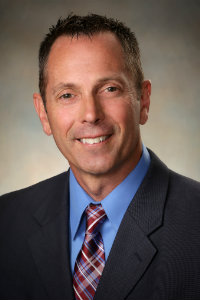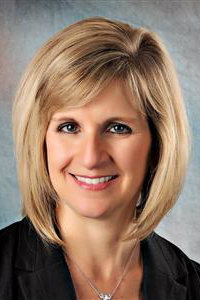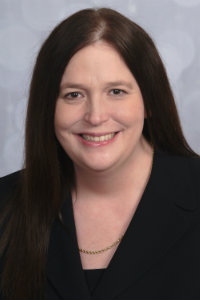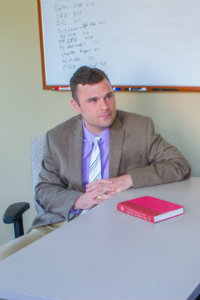Why Educational Policy is Broken. And the Voices of those Who Can Help.


James M. Loy, Miami University
Listen to the audio podcast
Part 1
Part 2
Read the story
When a local superintendent finally had the chance to explain his position on an important piece of educational policy to state lawmakers, it was already too late.
But he still used the occasion to spell out why he believed Ohio’s Third Grade Reading Guarantee, which mandates the retention of students who fail a final reading assessment, was a terrible idea.
“The research is completely overwhelming,” says Dave Hile. “Grade retention is one of the worst things you can do to a kid because you are removing them from their peer group and it is absolutely devastating. Nothing good comes from it. Only harmful effects. You actually hurt a student’s academic progress for the rest of their career by retaining them.”
As the superintendent of Ohio’s Licking Valley Local Schools, Hile is not only invested in the success of his district. He’s also pursuing a doctorate in educational leadership through the College of Education, Health and Society (EHS) at Miami University, where he’s continuing to think deeply about how our system develops, executes, and manages educational policy on multiple levels.
So he explained to these lawmakers how holding a student back just once means risking a 50% increase in their likelihood to dropout out. He also talked about how third grade is sometimes just too early to help some students catch-up. And he even explained why offering extra, individualized support in subsequent grades is a far better solution.
“We had a breakfast and I explain the research and that’s why I was opposed to the Third Grade Reading Guarantee,” Hile says. “And one of the legislators, someone from my district, raised his hand and said, ‘Dave, why didn’t you tell us about this before we passed the law?’”
A growing disconnect
“And that,” Hile says, “is the biggest problem in education policy. The politicians make a lot of decisions that are not informed by research or the practitioners. And then when it eventually becomes obvious that the policy is unworkable or it’s somehow harmful to students, then the politicians reverse or revise a decision and then all that time, money, and effort is wasted.”  Dave Hile
Dave Hile
This is not an uncommon story. Nor is it unique to Ohio. It’s a scenario indicative of the growing disconnect between the policy makers who design the laws and the educators who must follow them.
“We have a lack of educator voice in our policies,” says Andrew Saultz, Miami University assistant professor of educational policy. “And we have policy makers who, by and large, are not educators. And as a result, they are viewing education through a lens of what might work in business or other sectors and they are not understanding the complex classroom climate and the details of being a teacher.”
Across the state, this disconnect between policy and practice has already lead to numerous problems on several fronts. In fact, ever since the inception of No Child Left Behind in 2002, educational policy as a whole has become an increasingly complex and heated subject among politicians, parents, and professional educators alike.
To many, it’s an area fraught with strife and uncertainty, and it’s been blamed for a variety of complications including everything from an overzealous testing culture that obstructs classroom creativity and personalized student engagement to a deluge of ever-changing accountability and performance standards, vanishing recess time, and more.
Confusion, conflict, and cost
“This is my 29th year in education and the thing I hear more and more from educators is that it’s overwhelming,” says local Ohio superintendent Kimberly Pietsch Miller. “We have so many rules and requirements that come up so quickly. In some ways, the Department of Education has to try and keep up with these laws. They can’t. We can’t. We can barely figure out how we are supposed to implement one new requirement and there are more coming behind it.”
Like Hile, Miller is also enrolled in the educational leadership doctoral program at Miami, and as the superintendent of Bexley City Schools District, she routinely encounters the conflict between policies that may work far better in theory than in reality.
 Kimberly Miller “In Ohio, just looking at the state level, our school districts are so different,” Miller says. “We have very small rural school districts, very large urban districts, and everything in between. But sometimes what makes sense for a large urban school does not really playout the same way in a small suburban school. But the rules are the same for everybody.”
Kimberly Miller “In Ohio, just looking at the state level, our school districts are so different,” Miller says. “We have very small rural school districts, very large urban districts, and everything in between. But sometimes what makes sense for a large urban school does not really playout the same way in a small suburban school. But the rules are the same for everybody.”
Whether they need them or not, schools are forced to deal with all manner of policies as they rain down arbitrarily. If a few select schools are struggling in one particular academic area, for example, it might prompt legislators to call for a new mandate, but with little or no consideration of how it could affect or even burden all the rest.
Sometimes the same policy can also be interpreted very differently, even within the same district. If the county courts, city councils, community organizations, and local schools all infer a different meaning from one policy, the resulting confusion can take time and effort to untangle.
In other cases, schools can be hurt financially. Very often, forced federal and state budget cuts will sweep indiscriminately across the state. And as a small rural Ohio district, Kenton City Schools, for example, is currently dealing with the stress and uncertainty of the recent federal cuts to Title I, which provides financial aid to districts with low-income students.
“Title I is a huge asset to my district,” says Jennifer Penczarski, Kenton City School District Superintendent and Miami educational leadership doctoral student. “We are a high poverty rural district. Without the federal funding for those types of resources, our students will be at a significant disadvantage. This year, the cuts from the federal government, coupled with state level funding cuts, resulted in our district taking a significant financial hit.”
“But yet,” she continues, “as far as meeting the state academic performance standards as a district, we still have a significant gap with our socioeconomically disadvantaged and special education subgroups. We are still expected to take measures to close that gap, but at the same time we are losing the funding and resources required to do that kind of work.”
Many schools are facing similar financial dilemmas. And this is not the only way money can quickly become a big problem. “A good example is the PARCC Assessments,” Hile says.
After Ohio spent approximately 16 million to impose this state-wide standardized testing tool, PARCC was quickly found to be impractical and unmanageable. Schools didn’t like it and parents liked it even less. These tests, in fact, even helped foment the now infamous parental opt-out moment. So after only one year, the state legislature reversed their decision, canceled PARCC, and began the search for a new assessment tool all over again.
“That 16 million is only what Ohio paid to purchase the assessments from PARCC,” Hile says. “It does not include the untold millions of dollars that school districts spent getting ready and then actually implementing them and then the untold hours of lost instruction as a result. It is a prime example of the really uninformed decisions by policy makers that had enormous consequences.”
And so the cycle continues.
But today, new developments are now in action that could help bring about policy that is more stable and more localized. As of this 2017-2018 academic year, the Every Student Succeeds Act (ESSA) has officially replaced No Child Left Behind as the dominant federal policy.
Some leaders and experts are hopeful about this recent transition. Others, however, still believe things will get worse before they get better.
How we got here
When No Child Left Behind (NCLB) became federal law in 2002, it was essentially just an updated reauthorization of President Johnson’s Elementary and Secondary Education Act, which was originally passed in 1965. So the concept of a federal educational policy was nothing new to professional educators.
But the reason why NCLB has become so ingrained in public discourse is because it created the culture of testing that is now so deeply woven throughout schools. As a way to hold schools accountable, NCLB marked what Saultz calls “a major shift in the philosophy of the federal government.”
The motivations for this shift were noble. It was meant to identify and close achievement gaps among minorities and various subgroups of underperforming children. But it was the execution where many educators took such umbrage, which again highlighted the classic discontent between policy and practice.
“With NCLB you had sweeping and unrealistic educational policy changes and mandates that came down from the feds that were plopped down on the states with very little effort to assist states in implementing those changes and very little consistency between the states,” says Hile. “So we ended up with what I call ‘No Child Left Untested’ and this over-testing travesty that we are still dealing with today.”
And the backlash was not only because the emphasis on testing seemed to diminish a focus on things like art, social studies, science, and recess. It was also viewed by many to be a profound overreach of the federal government. Constitutionally speaking, the federal government is granted no authority over education, but it stepped in anyway.
So today, 15 years later, the shift to ESSA was designed to address some NCLB’s most stern criticisms. Most notably, ESSA is a shift in power back to the states.
“ESSA limited the power of the Secretary of Education by writing in provisions that say the federal government can’t establish standards, for example,” Saultz says, “that states should be able to decide what standards students should know at what grade levels. So, really, what we are seeing is a return of a lot of the power to states that the federal government had taken over the last 10+ years.”
Not enough local control
Many educators view the move to ESSA as a positive step. In fact, both Miller and Penczarski admit to feeling less pressure from the federal level now that it is in effect. But the prevailing view, however, is that ESSA has not gone far enough.
“ESSA policy was giving the power back to the states,” Penczarski says. “But what I find interesting is how each state has interpreted or applied on that power. So Ohio still insists on a lot more testing than what is required. And there are other components of the previous policy that the state decided to keep that are not required in new guidelines from the federal government.” Jen Penczarski
Jen Penczarski
So even though ESSA can relax many federal standards, it hasn’t. Or, at least, not yet. So instead of the feds, now testing and accountability is driven by the states.
“The state likes to call that local control,” says Hile. “Local control to me, and to a lot of superintendents, is the school board in each district setting their policies. Not the state telling everybody what to do. Because the state does the same thing the feds do. They set a policy and it is once-size-fits all. And we have 612 school districts in Ohio. They are all vastly different and they all have vastly different needs, for the most part.”
In fact, aside from maintaining the status quo, the only significant thing ESSA has really done so far is to add yet another mandate.
“One of the critiques of NCLB was that it just focused on reading and math test scores,” Saultz explains. “So naturally policy makers said, well, if that’s the critique, we’ll just include more stuff in the accountability system. And so they said, ‘States, what we want you to do is pick a non-academic indicator to include in your school accountability system.’”
Non-academic indicators could be things like school climate, discipline reports, teacher engagement, and so on. So for its mandated non-academic indicator, Ohio chose attendance. And the lawmaker logic behind this choice was that since schools were already taking attendance anyway, it should be an easy box for already overwhelmed educators to check.
In theory.
But, again, this kind of policy making seems to rarely work so smoothly in practice. And like many other mandates, it may work for some schools, poorly for others, while likely causing varying levels of stress, uncertainly, confusion, and exasperation for all those in between.
“The attendance piece is awful,” says Penczarski. “We have no idea how we are going to implement all of the requirements. The manpower needed and the additional paperwork is one of our greatest barriers. Plus, our juvenile courts have really stepped back. The prosecutors are saying, ‘schools have to do X, Y and Z and all the steps must be done in a very prescribed manner before we even engage.’ So I think we are going to lose a little bit of the battle for attendance as a result, just because there are more hoops.”
Similarly, before ESSA, Miller’s district did not have a problem with absenteeism. But now -- when considering all the extra paperwork that will be required and now that the onus of tracking down students with excessive absences has been forced upon the schools instead of the juvenile courts -- it does.
“That is just another burden that has been put onto the schools to address,” Hile says.
Politicians: Slow down, listen
“We don’t live in a patient society,” Saultz says.
This comment is meant to critique a contemporary cultural attitude that encourages immediate solutions to many political and social problems. And unfortunately many issues related to education are often perceived by the general public to be such a problem.
“A narrative has been created that schools are broken,” says Hile. “And really nothing could be farther from the truth and from the evidence. Across this nation, our high school graduation rate is about 85%. It’s never in the history of this country been higher. That’s just one measure of effectiveness of schools. But even though we have done nothing but increase the graduation rate and, I believe, increase the quality of education over the last 50 years, there’s still this narrative. And I think it is a false narrative.”
But, nevertheless, it continues to be a narrative that provides a quick and recognizable topic for many political agendas. So education, in a way, has become a kind of “political football” that fuels an array of campaign promises which only exacerbate the policy problems. If politicians get elected by running on a platform that includes education reform, then they typically feel the subsequent pressure to solve the issue in their term to appear productive.
It is this pressing political motivation, along with the reoccurring political cycle, combined with the false narrative surrounding public education, that all creates a toxic situation that both encourages extreme urgency while simultaneously discrediting the concerns of educators.
“Policies get imposed without input because they don’t have time for the input,” Hile says. “And on top of that, they have very little respect for educators. They think educators are just protecting their own fox holes and don’t really want to make changes. So they implement these things without their input because it is the fastest, easiest thing to do.”
Mending this rift between policy and practice, therefore, means first taking a step back and thinking through the incongruous connections between political action, practical understanding, and public perception.
 Andrew Saultz So for starters, “policy makers need to slow down,” Saultz says. “For positive change to occur you have to be really patient.”
Andrew Saultz So for starters, “policy makers need to slow down,” Saultz says. “For positive change to occur you have to be really patient.”
Next, he says, “I also think we have to be innovative in how we can listen to educator voices and student voices because they are the people that are in schools. So I worry that as more people get involved in policy, and as policy continues to shift, all these people who haven’t been in school since they were students may have a distorted view of what’s actually going on.”
Saultz believes it is imperative for both federal and state lawmakers to acknowledge and seriously listen to the educators who are out on the frontlines every single day. And most superintendents will agree. In fact, Hile even suggests creating “a policy making infrastructure that includes professional educators in the policy making process.”
Penczarski, too, thinks listening to teacher voices is among the highest priority. But she also advocates listening to city leaders, local businesses, and parents as well.
“Those critical conversations are really important because I know when I meet with business leaders, councils, and other stakeholders, I learn so much,” she says. “It forces me to think about educational outcomes differently than I would have if I only looked at it from my desk as an educator.”
Teachers: Be proactive, get engaged
So how can we hope to fix a broken system perpetuated by an inefficient, confusing, and expensive barrage of education policies that continually seem to exasperate rather than help?
Listening to the voices of those who know would be a very good start.
However, experts also recommend avoiding the temptation to simply shift all responsibly back onto the politicians. Because if the politicians have a responsibility to listen, then teachers must also play a role in making their voices heard.
For many superintendents, this has already become part of the new normal. Alongside overseeing the daily administration of their districts, most also pay very close attention to upcoming policy proposals and regularly engage with political leaders and lawmakers on several levels. That’s just part of the job. But teachers, too, should also find ways to be more proactive.
“I am a firm believer that educators should look for ways to insert themselves into the policy process,” Saultz says. “Whether it is going to school board meetings, running for school board, or running for office and things of that nature.”
Saultz thinks teachers should see themselves as more than just educators. They are also citizens who have unique and important experiences that can inform communities and policy makers about what is really happening in schools and about what their students really need. They, above all, are in the best position to understand the idiosyncratic and nuanced challenges that their particular communities and districts face.
But that, in turn, also means teachers are in the best position to understand their own limitations and weaknesses as well.
No school is perfect, and many schools across the nation are suffering from a wide range of very real and very pressing problems. And solving these issues will require more than one side simply expecting a dramatic change from the other.
“We also have to be honest about our areas to improve,” Miller says. “We can’t simply fight against anything that comes down the road. So educators have to be vocal and involved, but we also have to be thoughtful and we have to be willing to work with our legislators. Let’s talk to each other. Let’s listen to each other. And come up with policies that are actually going to benefit the students that we teach.”

